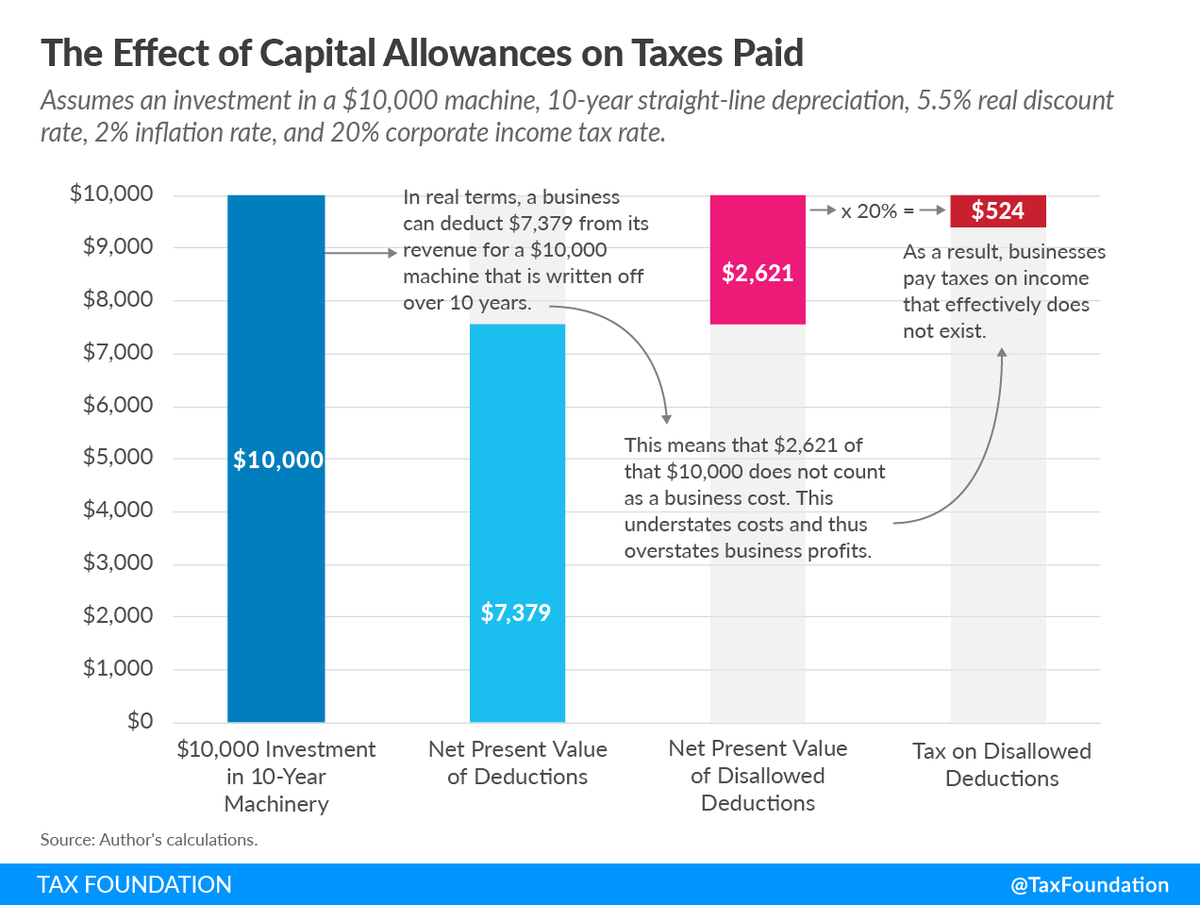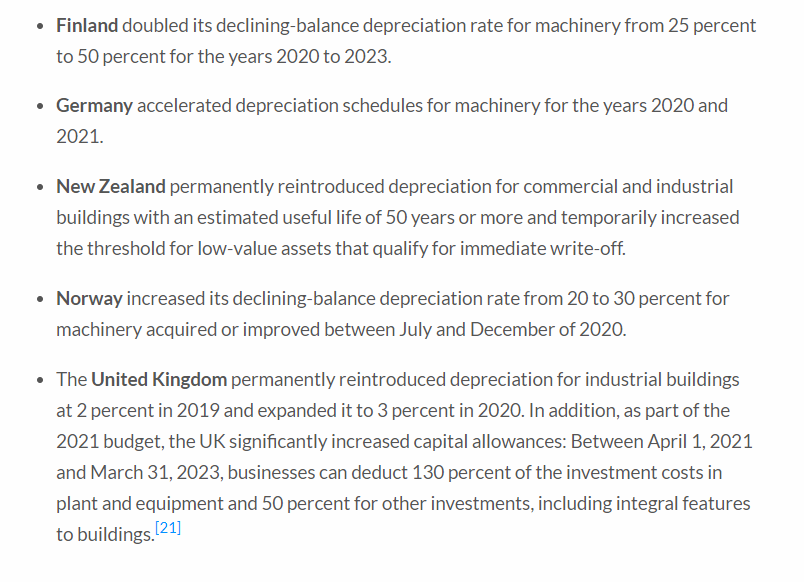
President Biden and congressional policymakers have proposed several changes to the corporate income tax to raise revenue for new spending programs.
Our new modeling analyzes the economic, revenue, and distributional impact of these proposals. 👇
buff.ly/3qUbeHz
Our new modeling analyzes the economic, revenue, and distributional impact of these proposals. 👇
buff.ly/3qUbeHz
President Biden has proposed raising the U.S. corporate income tax rate from 21 percent to 28 percent and imposing a 15 percent minimum tax on the book income of large corporations.
An increase in the federal corporate tax rate to 28 percent would raise the U.S. federal-state combined tax rate to 32.34 percent, highest in the OECD and among Group of Seven (G7) countries, harming U.S. economic competitiveness and increasing the cost of investment in America. 

Increasing the U.S. federal corporate tax rate to 28 percent would reduce long-run economic output by 0.8 percent, eliminate 159,000 jobs, and reduce wages by 0.7 percent, according to our TAG 2.0 General Equilibrium Model: taxfoundation.org/biden-corporat… 

• • •
Missing some Tweet in this thread? You can try to
force a refresh










